Labor Day sales are a great time to pick up a new TV. We’ve collected the best Labor Day TV deals across retailers like Best Buy, Walmart, Amazon and more. These are likely the best prices you’ve seen since Prime Day, and the best prices you will see until Black Friday. Whether you need a new TV for the upcoming NFL season, or it’s just time for an upgrade, this weekend is a great time to shop Labor Day TV sales.
Today’s best Labor Day TV deals
Onn. 24-inch HD TV — $88, was $118
Not everyone needs a 4K TV. If you’re just looking for a TV to add to your child’s bedroom or your kitchen, the Onn. 24-inch HD TV is a good option. It has Roku Smart TV built-in so you can easily stream from all your favorite services with a customizable home screen making it simple to find what you need. The TV has three HDMI inputs so if you need to add a games console or similar, you can do so without any bother. It’s also smart home ready working with Apple Home, Amazon Alexa, and Google Home.
TCL 32-inch 3 series HDTV — $108, was $148
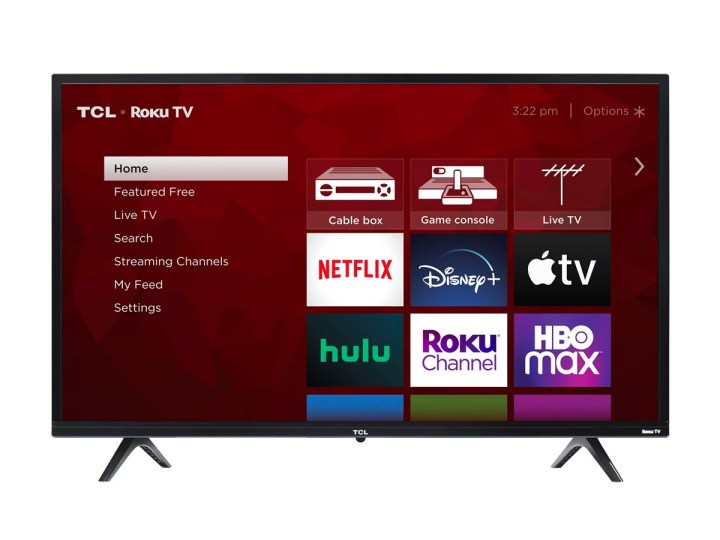
If you’re looking for great TV deals for Labor Day, you can’t go wrong with this 3 series from TCL. While it doesn’t have some fancier features like HDR or 4k, the 720p screen gives you cheap TV access and the Roku platform. You also get dual-band Wi-Fi to connect and stream wirelessly, the ability to turn your smartphone into a remote for the TV, and 3 HDMI ports to work with, including one ARC port, which isn’t something we tend to see often. That means that if you’ve picked up one of these soundbar deals, you don’t have to lose a port to use it, which we very much appreciate.
Insignia 50-inch F30 4K TV — $220, was $350
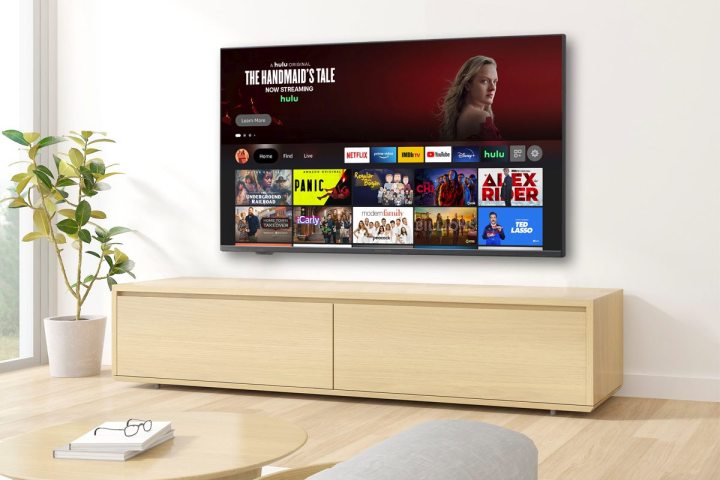
Probably one of the cheapest 4k TVs on this list, the F30 from Insignia packs quite a punch for costing less than $25. In fact, Insignia even manages to throw HDR 10 in, and while it won’t be the best HDR you’ll see, it’s a good introduction to the tech. Also, if you’re a fan of Amazon, then you’ll be happy to note that it runs on FireTV, which means you get integration into the Alexa ecosystem, as well as having essentially all your Amazon ecosystem at the touch of a remote control. It’s also a great option if you want a TV to game on because, even though it doesn’t run at 120Hz, the 60Hz will often be perfect for most games on the Xbox Series X and PS5. It even has DTS Studio Sound, we don’t often see on TVs this cheap.
Insignia 55-inch Class F30 4K TV — $270, was $400
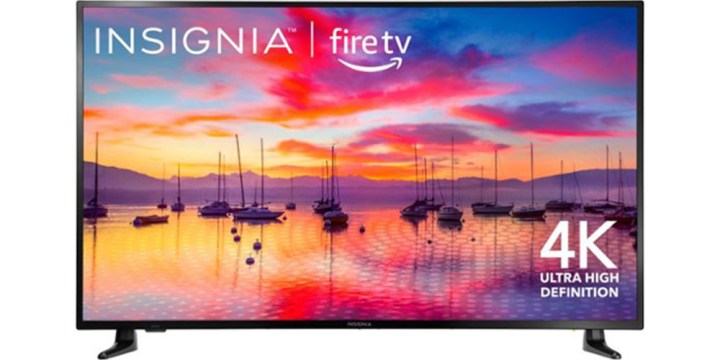
If you liked the previous entry from Insignia, then for an extra $20, you can grab this 55-inch version of the TV instead, and it’s well worth it if you have the room to accommodate. It has all the same specs, such as HDR 10 and 4k resolution, and is built on the FireTV platform. In fact, given that it’s the same TV but with an extra five inches, we’re impressed that it’s only $20 more expensive while still having things like DTS Studio Sound and both Wi-Fi and ethernet connections.
Roku 65-inch Select Series 4K TV — $400, was $450
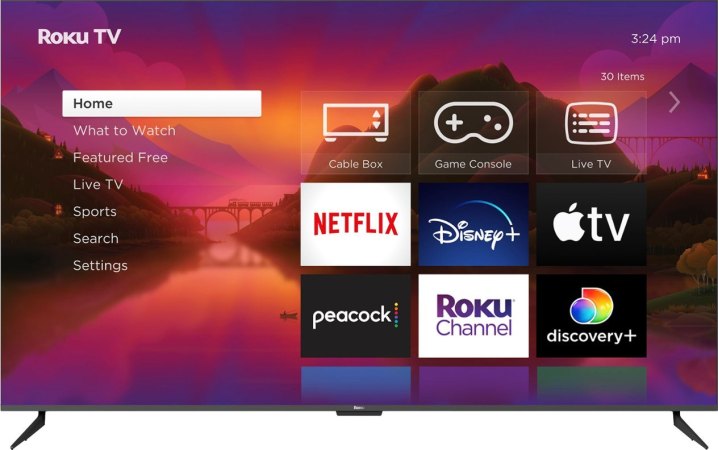
While we’re moving up significantly in price, we’re also seeing a lot of great features with Roku’s Select Series. Of course, it comes with a 4k resolution, but it also comes with HDR10+, and it’s probably the cheapest TV on the list that supports it. If you’re unfamiliar with HDR10+, it’s essentially a higher-end version of the usual HDR, with quadruple brightness, up to 4,000 nits. The Class Select Series also comes with HLG, which is the HDR format that most sports broadcasters use, so if you like watching sports, this TV is a great option. It would have been great if it came with a 120hz base refresh rate to help with more action-packed content, but that’s not something we see until the $1,000 range, so for what you get, this is one of the best deals on the list.
Vizio 50-inch MQX Series 4K QLED TV — $500, was $630

Packed with features, the Vizio 50-inch MQX Series 4K QLED TV demonstrates you don’t have to spend a fortune for a great QLED TV. It’s a 120Hz panel so it’s great for fast-moving action or gaming. It uses an Active Full Array while there’s Dolby Vision support too. HDR10+ adds to the vibrancy of images while there’s Active Pixel Tuning to ensure things continue to look good every step of the way. Hook it up to a PC and you can even game at 240fps at 1080p resolution. Simply put, there’s a lot to like here, especially at this price.
TCL 55-inch Q7 QLED 4K TV — $550, was $750
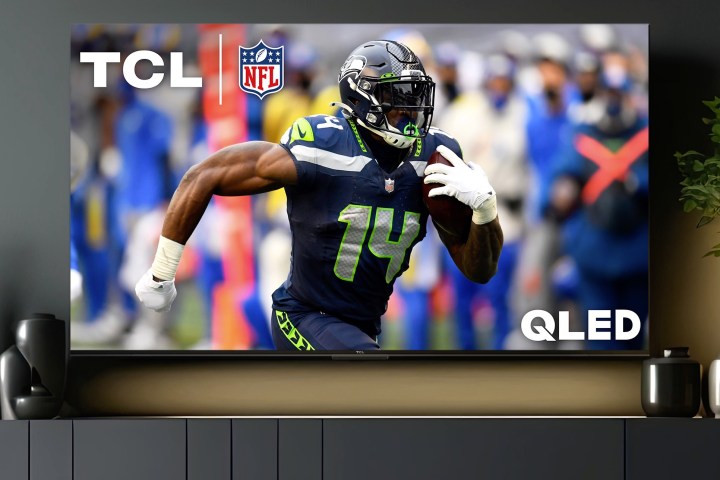
Interestingly, the TCL Q-Class has all the features you’d need for high-end gaming and sports watching, so if you’re willing to go for a smaller size, the extra $70 is well worth it. For starters, the Q-Class has a base refresh rate of 120Hz, which is perfect for the latest-gen gaming consoles and high-end gaming PCs; plus, it’s great for watching high-intensity stuff like sports or action movies. It also comes with HDR 10+ and HLG, so it’s versatile, and the Full Array Dimming means you get excellent dark colors. If that wasn’t enough, the Q-Class has a QLED TV, ergo the name, which gives you more vivid and accurate colors.
Toshiba 75-inch C350 Series 4K TV — $570, was $800

When it comes to large 75-inch TV deals, it’s always a worry about what you’re giving up in exchange for the larger size, especially when it maintains budget pricing. Luckily, Toshiba is an excellent brand with a lot of knowledge it can use to keep prices down, so you’re not missing out on much. For example, you still get Dolby Vision and HDR10, which is excellent, and an auto low latency game mode, a feature that previous TVs have lacked, so it’s even better for gaming. It also has Motion Rate 120, which is a frame smoothening technology that attempts to recreate the higher 120Hz refresh rate, although that can often have mixed results. Even so, it’s still a great TV for the price, whether you want to watch sports, movies, or play video games.
TCL 85-inch S4 S-Class 4K TV — $900, was $1,400
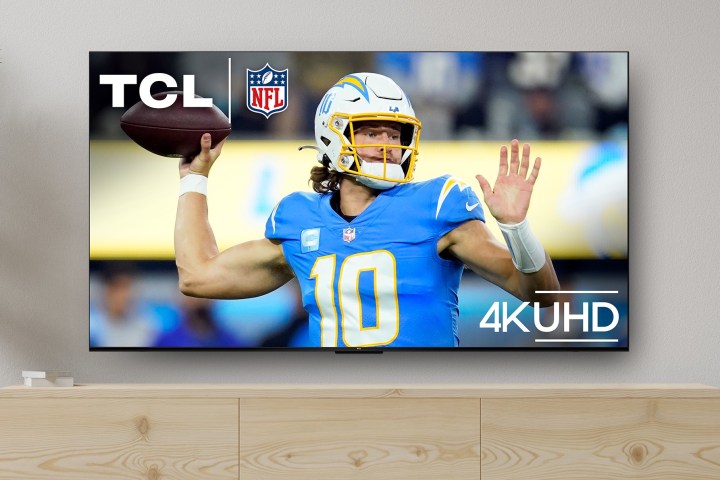
Of course, if you want the biggest TV you can find, the TCL 85-inch S-Class is probably the closest you’ll get, especially for a price point below $1,000. While it doesn’t have some of the fancier features of the Q-Class, such as a base 120Hz refresh rate, or a QLED panel, it still has some nice tricks up its sleeve. For example, it comes with both HDR 10 and HLG, so it’s great for sports, and it even has Motion Rate 240, a more advanced motion smoothening technology, although, again, that can be hit or miss. Luckily, it has Auto Game Mode for lower input lag and latency, which we appreciate, as well as Bluetooth personal audio, so you can connect your TV directly to your headphones for a private listening experience, perfect for some late-night TV watching or if other members of your house are working.
Samsung 65-inch Q70C QLED 4K TV — $900, was $1,300
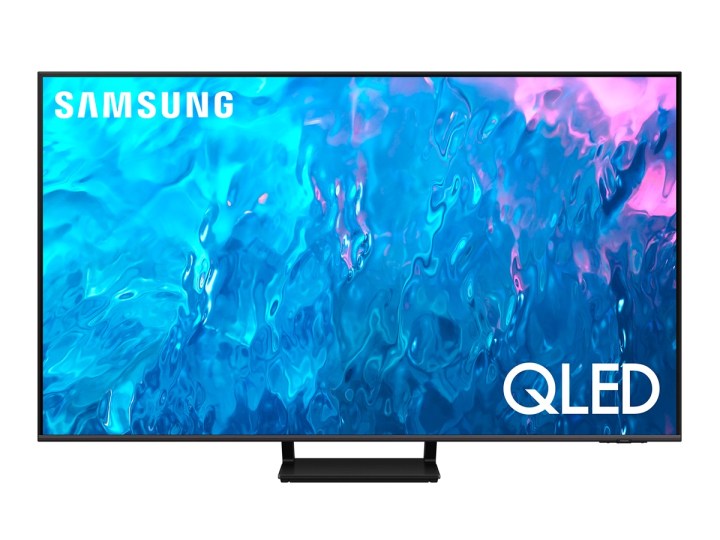
The second QLED TV on the list, and this time it’s from Samsung, one of the best TV brands out there. For example, while most of the previous TVs came with 4k, this Q70C has a 4k upscaler which lets you watch older, non-4k content with a higher resolution. It also has a base refresh rate of 120Hz, so it’s perfect for gaming, sports, and high-intensity shows and films; it even comes with FreeSync Premium Pro so you can connect your high-end gaming PC, which we appreciate. Samsung also throws in its Quantum HDR tech, which is essentially Samsung’s high-end and proprietary HDR tech that gives you a higher peak brightness value, as well as better color accuracy.
Hisense 65-inch U8 ULED Mini-LED TV — $1,000, was $1,400
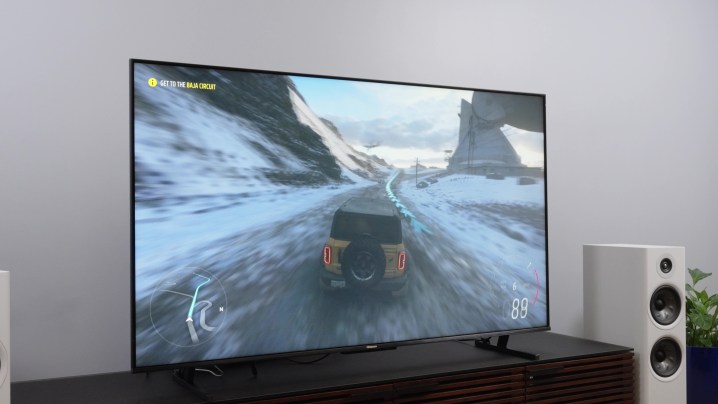
Utilizing mini-LED means that the Hisense 65-inch U8 ULED Mini-LED TV offers a far brighter image than most with light evenly distributed for a uniform image across the screen. With the combination of mini-LED and QLED tech, you get better color, brightness, and contrast overall. Alongside that is a dedicated filmmaker mode that ensures your TV displays a movie just how the director wanted it to look, while there’s a 144Hz game mode which ensures automatic low-latency and variable refresh rates. HDMI 2.1 ports make it a good deal for hooking up the latest games consoles.
TCL 75-inch Q7 QLED 4K TV — $1,000, was $1,400
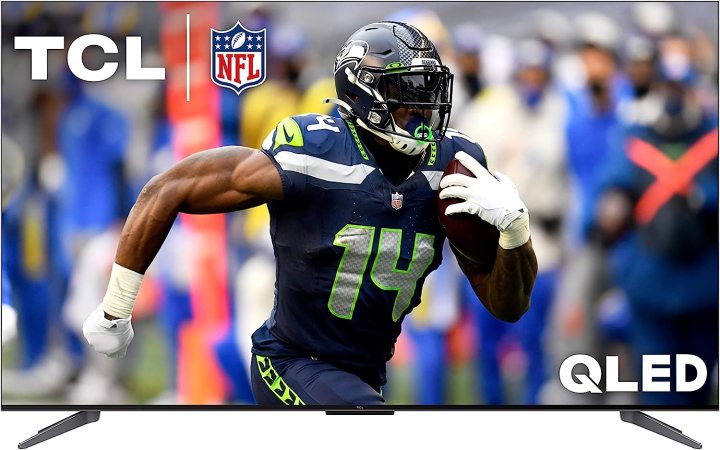
This 75-inch Q7 Q-Class is exactly the same as the 75-inch version, so if you really liked all the specs on that one but want a bigger screen like the 75-inch Toshiba C350 Series, this is the TV to go for. While it does come at quite a premium at $1,100, you still get all the same great features like HDR 10+, HLG, a 120Hz refresh rate, and even Motion Rate 480, although we doubt it’s going to be as useful or good as just running the tv at 120Hz.
TCL 85-inch Q6 QLED TV — $1,100, was $1,600
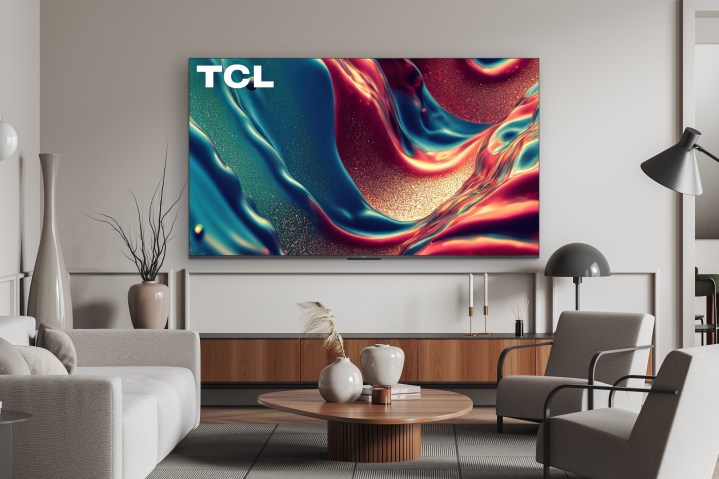
For the ultimate home cinema experience, it’s hard to beat the TCL 85-inch Q6 QLED TV. Fantastic value for money, it’s a huge TV with QLED technology ensuring it looks great. The Q6 models have brighter images than most thanks to their HighBright Direct LED backlight that provides an enhanced viewing experience for all. There’s also Motion Rate 240 technology for watching movies or sports, while the game accelerator mode has 120Hz variable refresh rates and low input lag. HDR Pro+ with Dolby Vision, HDR10+,HDR10 and HLG round off the package well.
Sony 85-inch X77L — $1,298, was $1,500
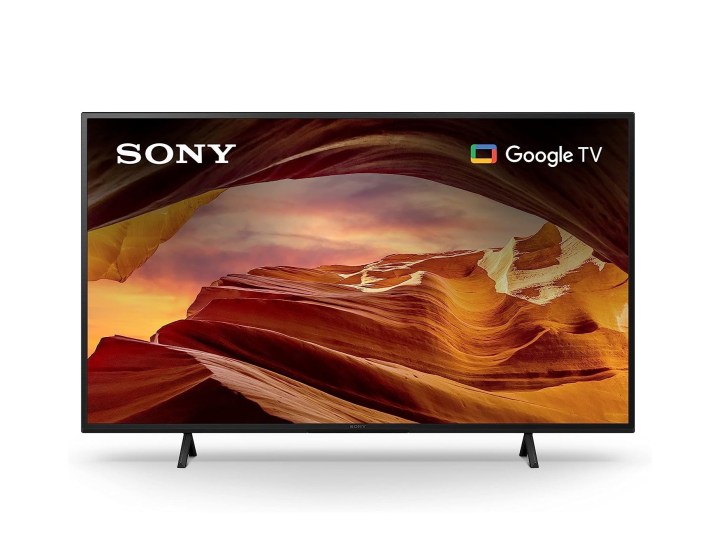
Sony is always a good option for TVs. This particular model has the Sony 4K processor X1 to help provide a lifelike picture that is rich in color and offers sharp details. A wide array of colors and dynamic contrast further help while there’s 4K XR-Reality Pro technology for upscaling content to near-4K resolutions. For gamers, there are exclusive features for PS5 owners including auto HDR Tone Mapping and auto genre picture mode for an improved image. Motionflow XR technology guarantees no motion blur too.
Sony 75-inch BRAVIA XR X90K 4K TV– $1,600, was $1,700

If you want a 75-inch TV with some of the best tech on the market, the Sony Bravia XR is that TV. Besides the typical things you’d expect for a TV this fancy, such as a 120Hz refresh rate and full array backlighting, you also get Sony’s Cognitive Processor XR, which helps recreate images the way they’re meant to be seen. This tech also helps with 4k upscaling, providing higher-quality upscaling than you might usually find in lower-end TVs, as well as motion smoothening and blur-removing features.
Samsung 65-inch S90C OLED 4K TV — $2,000, was $2,600
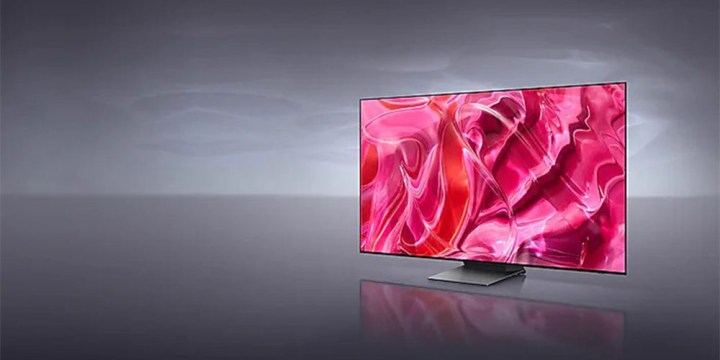
If you like Samsung’s ecosystem, this 65-inch S90C is the perfect option, and it comes packed with many great features. For example, you get a 120Hz refresh rate, HDR10+, and HLG, and a neural quantum processor for next-level 4k upscaling. You also get an OLED panel, which is a competing technology to QLED, although they each have their own advantages and disadvantages, which you can check in our breakdown between QLED vs OLED. Colors are also Pantone Validated, meaning that they’re essentially perfectly calibrated, and there’s even Samsung’s Q-Symphony, which lets you pair a compatible Samsung soundbar to create a surround sound without having to buy a whole set of speakers.
Samsung 75-inch The Frame TV — $2,200, was $3,000

Samsung’s The Frame TV is truly unique. It has the gorgeous QLED display that Samsung is famous for, plus the one of a kind Art Mode feature that displays pictures so well you’ll think they’re paintings. Samsung has accomplished this technical feat with a combination of a high quality QLED panel, which helps display billions of colors, and a matte mode that reduces glare on the screen, which would ruin immersion. So when you’re not watching TV, you can display any museum-quality picture you’d like.
Sony 77-inch Bravia XR A80L OLED TV — $2,998, was $3,600

The Sony 77-inch Bravia XR A80L OLED TV makes everything you watch look gorgeous. The Cognitive Processor XR provides wide dynamic contrast with detailed blacks, natural colors, and a high peak brightness level, so it looks truly lifelike. There’s also XR OLED Contrast Pro and XR Triluminos Pro technology for pure blacks and billions of accurate colors. PlayStation 5 gamers get even more with auto HDR Tone Mapping and auto genre picture mode adding to the advantages of HDMI 2.1 ports. There’s also support for Dolby Vision, IMAX Enhanced, Netflix Adaptive Calibrated Mode and many other useful options. Even sound wise, you get the benefits of Acoustic Surface Audio+ so you get clear dialogue every time.
Should you buy a new TV on Labor Day?
If you’re not sure whether now is the right time to buy a new TV as part of the Labor Day TV sales, we’ve got some key advice for you. Simply put, how much do you need a new TV? Odds are you already own one. Of course, if your TV has just failed or is incredibly old, these Labor Day TV deals are the ones for you. There’s sure to be something here to lure you in.
It’s important to think carefully though. It’s very easy to be tempted by sales season, simply because something is available for a good price. Think about your budget. It’s possible to spend a little or a lot on a new TV with the latest QLED and OELD technology looking very tempting but it should only be if you can afford it. Think about what you can spend. If you can spend quite a lot then do so. Invest in a TV that’s future-proofed and will last you a number of years. However, if you simply want a budget TV for your kitchen or bedroom, don’t go nuts. Spend accordingly and resist spending too much even if the sales are really tempting.
In terms of timing, Labor Day is not a bad time at all to spend money. Since Prime Day, the summer has been pretty quiet when it comes to great deals and Black Friday isn’t for another couple of months. Sure, if you hold out until Black Friday, you might score a better deal than those available via the Labor Day TV sales but that means no new TV for a couple more months. It also means you’ll need to spend money on a new TV in time for the holidays when money might be tighter. Increasingly, sales like Labor Day work out almost if not equally as good value as waiting until the ‘big’ day in November anyhow so it could be worth your while to jump into the sales now rather than wait.
Just remember — don’t be tempted by a new TV purchase unless you really need one. A new TV is a pretty big investment to make and it’s important to be committed to your purchase so you get the best value for money. That’s why you should really know how best to choose a new TV for your needs. Fortunately, we’ve got you covered on that front before you hit the Labor Day TV sales.
How to choose a new TV on Labor Day
When buying a new TV, there’s a lot to consider. First of all, think about your budget. A new TV can cost a lot or a little depending on what you need from it. A cheap 720P unit will cost very little while the latest QLED or OLED TV could cost a ton. It’s important to know what you can afford and that you stick to it otherwise you might not get the best value for your needs. Once you know your budget, keep around that figure so you don’t buy an inferior TV but you also don’t overspend.
Once you’ve gotten that far, it’s a smart move to consider the best TV brands out there. Generally, for high-end devices, you want a TV from either Samsung, LG, Sony, or Vizio. Each offer some of the latest technology in varying different ways. However, it’s also worth considering TCL, Hisense, and Panasonic as great up-and-coming brands. Pick a TV from one of these and you’ll get a great picture for less but potentially not as many features as one of the heavyweights.
If money is no object, check out our look at the best TVs right now. There are some extraordinary TVs out there and it’s worth weighing up the differences between QLED and OELD technology to know what will work best for your needs.
If your budget is tighter, there’s also the best TVs under $1,000 to consider or even the best TVs under $500. These are all great TVs and can be bought for less as part of the Labor Day TV deals going on at the moment.
We have an extensive 4K TV buying guide for you to consult but there are some key facts to take away here. Once you’ve figured out your budget, think about what size TV you need. You might think that bigger is always better but it depends on where you’re placing your TV. You don’t want the TV to swamp your living space so it’s important to figure out the ideal viewing distance and go from there. Measure up your room so you know what works best for you and consider whether you can wall-mount your TV instead for more space.
Odds are you want a 4K TV but it is still possible to buy a 1080p or even a 720p display. Again, these might be fine if you’re looking for a smaller TV set for your kitchen or a spare room but only you really know if this is the case.
There are 8K TVs too that are very expensive but obviously offer the best picture quality out there right now. Rarely discounted, it could still be worth looking for one in the Labor Day TV sales providing you can afford to splash out on such a big purchase. Bear in mind that native 8K content is hard to come by right now so there are disadvantages to being ahead of the technology curve but you won’t be disappointed by what’s offered here.
Another thing to consider when buying a new TV is how much do you need smart TV functionality? The majority of TVs offer some form of smart TV operating system but for some users, they’ll still prefer to stick with a separate streaming device such as a Roku stick, Amazon Fire TV Stick or Apple TV. It’s not worth spending the extra on different smart TV functionality if you know you’ll never use it but it can be good to have the option.
Gamers may also want to consider refresh rates and variable refresh rates with the likes of LG’s most recent OLED sets offering the best performance when playing games. Similarly, if you have the latest PlayStation 5 or Xbox Series X, look out for HDMI 2.1 ports so you get the best picture quality.
Editors’ Recommendations

